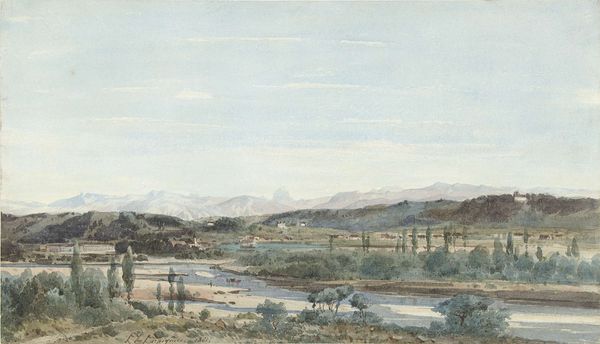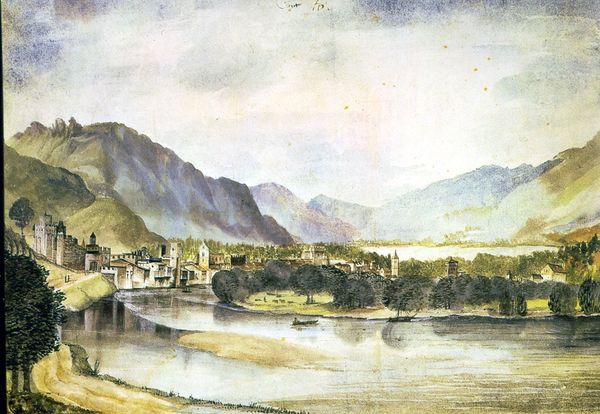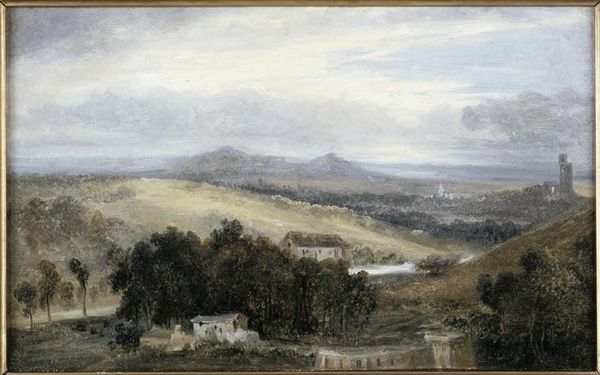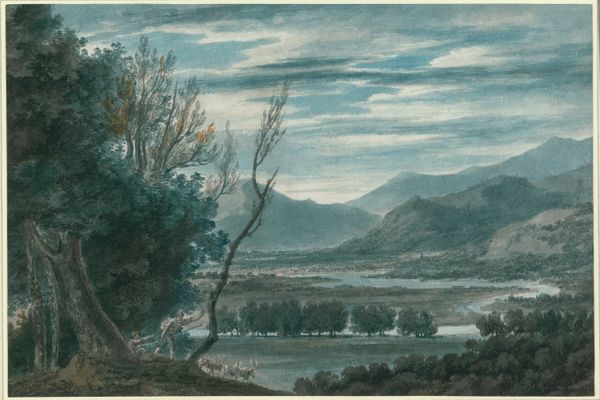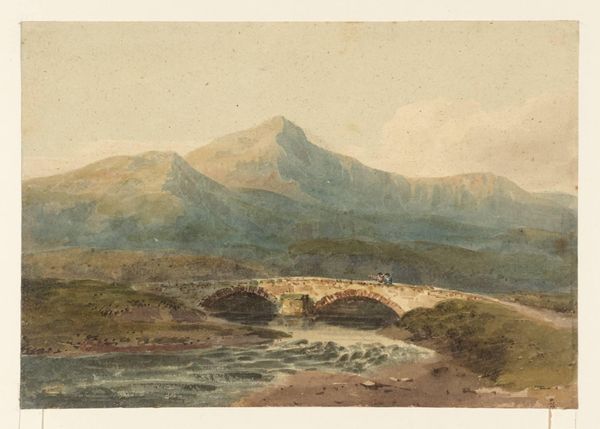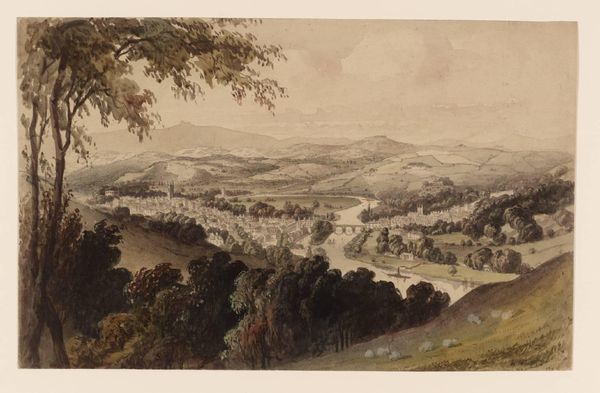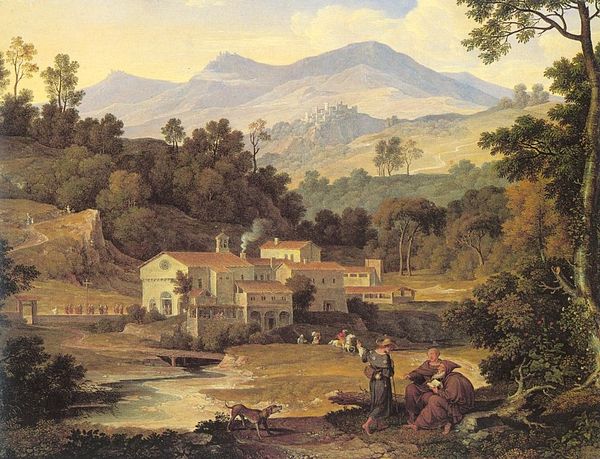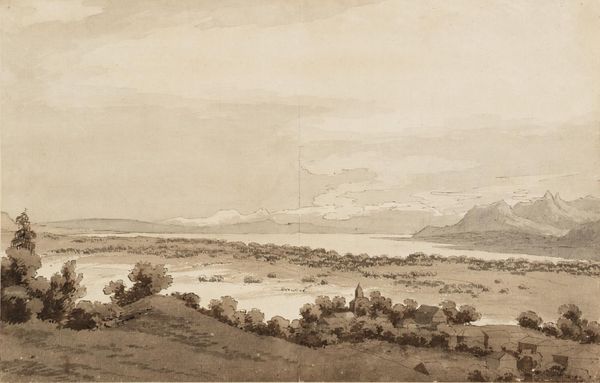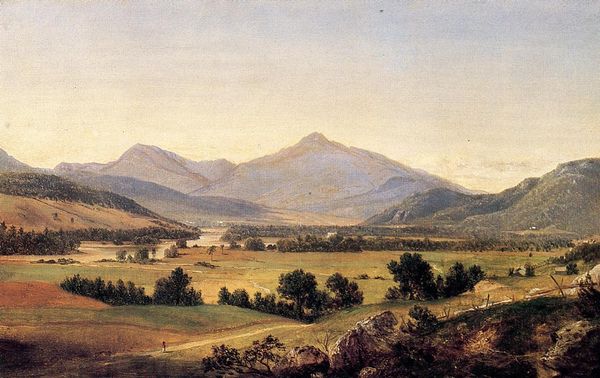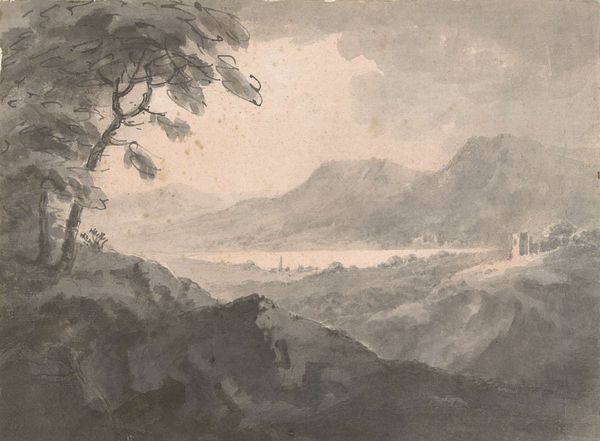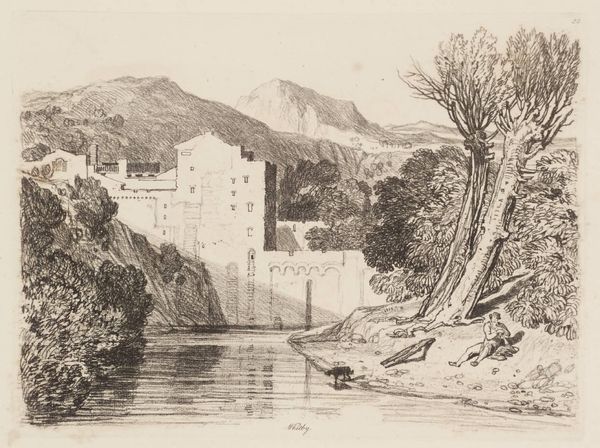
plein-air, watercolor
#
neoclacissism
#
plein-air
#
landscape
#
impressionist landscape
#
oil painting
#
watercolor
#
seascape
#
coastline landscape
#
cityscape
#
watercolor
Copyright: Public domain
Editor: This is Saverio della Gatta's "Gulf Of Naples With Granili, Seen From The Red Bridges", likely a watercolor and possibly oil on paper, judging from its texture. The landscape feels staged, almost like a backdrop. What strikes you about this particular depiction of Naples? Curator: Considering the prevalence of plein-air painting during this period, it is key to examine Della Gatta's methodology here. What sort of social circumstances would enable such meticulous landscape studies? It seems probable the materials were commissioned. Editor: Commissioned? Meaning…? Curator: Meaning that someone had to finance the labor of the painter, pay for the pigments and paper. Think about who that patron might be and what kind of vision of Naples they wished to convey. A "picturesque" and serene landscape? Or perhaps an aspirational outlook in their own properties and influence across Naples at the time? Editor: So, the materials themselves point to the power structures at play during the creation of this landscape. It almost wasn't about capturing nature, but about crafting an image of control. Curator: Precisely. The artwork becomes less about the artist's solitary vision and more about the complex relationship between the artist, patron, the available materials, and even the viewed object in its totality. Do you see any signs of industrial shifts during that era in the piece itself? Editor: Now that you mention it, the scale and organization of the "Granili" building visible in the distance look highly systematic and almost factory-like. So, maybe it’s a subtle suggestion of economic ambition through architectural form. Curator: Exactly! Reflecting then that materials and location reflect society. Editor: I'm now looking at this painting completely differently. Curator: Indeed, understanding art means comprehending labor and societal fabrics too.
Comments
No comments
Be the first to comment and join the conversation on the ultimate creative platform.


